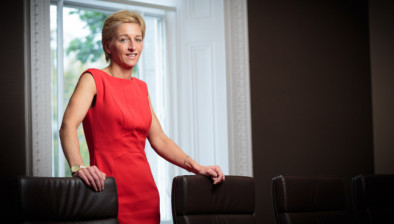New book from Stronachs sets out options in climate change ‘watershed’
Pictured (L-R): Ewan Neilson, Stuart Murphy, Sarah Dillon and James Muir
Stronachs LLP is preparing to publish a guide to new energies which is set to offer an insight into a “watershed” moment in challenges around climate change, energy transition and net zero.
The book is set to be published in two phases with a digital edition to be followed up by a print edition in coming weeks.
The product of its own publishing house, Aberlour Press Limited, the 19-chapter volume has been created thanks to a collaborative effort involving the firm’s team of staff and consultants.
The company’s fifth book – Guide to the New Energies – is entirely focused on emerging energies, examining the background and policy issues surrounding various energy sources. It leads with an introduction summarising and providing a starting point for discussion on some of the key energy sources and solutions which governments may adopt to meet the challenges of climate change in the next 20 years and, consequently, where investors may focus sustainable investment strategies.
As well as considering new energies against a backdrop of energy security, the underlying problem of climate change and possible solutions are considered before energy sources are laid out in the second “Technology Challenge” section of the volume. The book also sets out the key climate change targets that governments and countries will need to achieve because of international treaty obligations.
Ewan Neilson, one of the two joint editors, said: “According to the IEA Security of Clean Energy Transitions, the world is investing record amounts in renewable power capacity; 295 GW in 2021, with a further 320 GW in 2022 largely from solar PV. This equates to the European Union’s total electricity generation from natural gas, but it is only a starting point if the world is to keep to the IPCC target of 1.5 °C of future warming.”
Governments, financiers and companies internationally have all bought into the concepts of the energy transition and to net zero by using fossil fuels as a transition energy but also adopting new energy solutions. Substantial amounts of investment capital and human capital have been and will be committed on finding the best solutions; the Books is an aid to looking at each energy solution.
He added: “There are times in the world’s history when we reach key watersheds. We are in that time at present, and we could be facing catastrophic change. The decisions we choose to make at present will decide whether our species makes it through the next 200 years or whether we become, like so many other species over geological time, extinct.”








